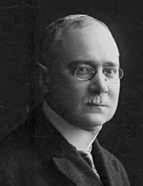

António Baião was born on 10 October 1878 in Alqueidão de Santo Amaro (Ferreira do Zêzere municipality) and died in Lisbon on 21 May 1961. He was the son of António Simões Baião and Emília Cotrim de Carvalho Baião, landowners.
He attended primary school in his hometown and secondary school at the Jesuit school of São Fiel (Louriçal do Campo) and in Santarém. He attended the School of Law at the University of Coimbra, graduating with a bachelor ’ s degree on 12 June 1900 at the age of 22. Between 1894 and 1900, when he studied in Coimbra, he was a contemporary of Emídio Navarro, Afonso Lopes Vieira , and Laranjo Coelho. He was a secondary school teacher in Santarém from 1900 to 1902.
However, his intellectual existence only truly began on 18 December 1902, the day he joined the National Archive of Torre do Tombo, after being appointed second curator (Raúl Rego, ‘O Dr. António Baião’, in Arnaldo Henriques de Oliveira, Catálogo da … biblioteca do Dr. António Simões Baião [ Catalogue of Dr António Simões Baião’s library] , p. III.
For almost half a century, from 1902 to 1948, António Baião ’ s life was closely intertwined with that of the Torre do Tombo. There, he blossomed as a researcher and scholar and quickly rose to become the institution ’ s first curator and director, on 23 June 1906 and 10 March 1908 , respectively. In the following years, he published studies on Herculano and the Viscount of Santarém, which were instrumental in his admission as a corresponding member (1913) and full member (1920) of the Academia das Ciências de Lisboa , an admission that was supported by the opinions of Gama Barros, Leite de Vasconcelos, David Lopes , and Cândido de Figueiredo.
Over the following decades, he became V ice- S ecretary G eneral of the Academia das Ciências and director of the Portugaliae Monumenta Historica . A founding member of the Academia Portuguesa de História, which was re-founded in 1936, he served as 2 nd V ice- P resident, 1 st V ice- P resident , and A cting P resident. Furthermore, he combined his duties as director of the national archive with those of administrative auditor for the Lisbon district and technical education for several years.
This work is financed by national funds through FCT - Foundation for Science and Technology, I.P, in the scope of the projects UIDB/04311/2020 and UIDP/04311/2020.
